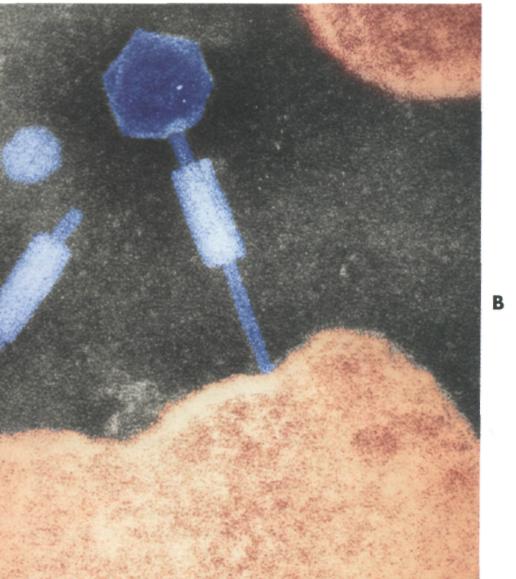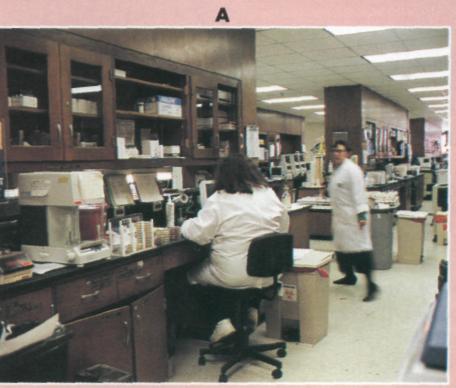
- •3 Science of Microbiology: Methods for Studying Microorganisms, 58
- •1 Unity of the Microbial World, 2
- •2 Diversity of the Microbial World, 24
- •3 Science of Microbiology: Methods for Studying Microorganisms, 58
- •4 Chemistry for the Microbiologist, 91
- •5 Cell Structure, 120
- •6 Cellular Metabolism, 157
- •7 Microbial Genetics: Replication and Expression of Genetic Information, 191
- •In this chapter we will:
- •12 Chapter 1 unity of the microbial world
- •Viruses can carry out the functions characteristic о living organisms only within living cells.
- •Importance of microorganisms to humankind
- •Importance of microorganisms to humankind 15
- •Importance of microorganisms to humankind 1 7
- •Importance of microorganisms to humankind 19
- •Importance of microorganisms to humankind 21
- •Importance of Microorganisms to Humankind (pp. 14-21)
- •Importance of microorganisms to humankind 23
Viruses can carry out the functions characteristic о living organisms only within living cells.


B, Colorized micrograph of a bacteriophage (blue) that infects and replicates within cells of the bacterium Chromatium violaceum (tan).
Practical Significance of Organizational Differences Among Microorganisms
Organizational differences between the acellular viruses, prokaryotic eubacteria and archaebacteria, and eukaryotic fungi, algae, and protozoa are of more than just scientific interest. They also have great practical importance. The use of many antibiotics (drugs that adversely affect microorganisms) to treat human diseases caused by bacteria, for example, depends on the ability of the antibiotic to act selectively against the prokaryotic cells of the invading bacteria without killing the eukaryotic human cells at the same time. Antibiotics, such as penicillin, are widely used to treat bacterial infections, such as syphilis, because they specifically target prokaryotic cells. If you were to develop pneumonia caused by a particular species of bacterium, a physician could prescribe any number of antibiotics that could kill the infecting bacteria and help cure you of the disease. It is more difficult to use antibiotics against disease-
causing fungi and protozoa, such as malaria, because fungi and protozoa, like humans, are composed of eukaryotic cells, so that what is toxic to them is also often toxic to the human cells.
Likewise, it is hard to find antibiotics that can be used to treat viral diseases because viruses replicate within the confines of the living cells of the organism they infect. Chemicals that inhibit viral replication generally do so by killing the host cell within which the virus replicates. This prevents the therapeutic use of these chemicals. No one wants to use a drug that kills the patient at the same time it kills the disease-causing microorganism. So, when you have the common cold — a disease caused by a virus—a physician generally can only tell you to rest, stay warm, and drink plenty of fluids. This prescription enables your body's own defenses to fight the invading viruses.
Importance of microorganisms to humankind
Without question we have learned a great deal about microorganisms in the last century. This knowledge now enables us to control microorganisms for human good—at least to some extent. We have developed methods for preventing microbial attack on foods and other materials. Refrigeration, freezing, canning,
and other methods prevent microbial growth and, thereby, preserve foods. We paint wood surfaces and keep fabrics dry to prevent deterioration due to microbial growth. Microorganisms are used for the treatment of sewage and municipal wastes, ridding the world of waste materials.

Microbiological researchers at university, government, and industrial laboratories carry out studies that reveal the fundamental nature of microorganisms and the practical applications of that knowledge. Understanding the genetics and metabolism of microorganisms facilitates the beneficial uses of microorganisms.
Health care workers treat individuals with diseases caused by microorganisms and try to prevent the spread of infectious diseases. Vaccination is used to prevent many once deadly diseases. Antiseptics are used to preclude microorganisms from infecting wounds. Antibiotics are administered to cure patients of infecting microorganisms.
The clinical microbiology laboratory helps diagnose the causes of infectious diseases and aids the physician in determining appropriate therapies.

The clinical microbiology laboratory helps physicians diagnose diseases and determine the most effective treatments (FIG. A). The clinical microbiologist and staff receive samples from physicians and run various tests to identify the underlying causes of disease in patients. The clinical microbiology laboratory also tests the effectiveness of various drugs against disease-causing microorganisms.
The food industry maintains strict quality control to preserve foods and to protect against the foodborne spread of disease. Technicians in the food industry frequently test batches of foods to ensure safe levels of microorganisms. Canning, refrigeration, freezing, and other methods are routinely used to prevent food spoilage.
Many foods and beverages are produced using microorganisms, including bread (yeasts are used for leavening to cause the dough to rise), cheese (bacteria are used to convert milk into various cheeses), wine (yeasts are used to convert grapes into this alcoholic beverage), beer (yeasts are used to convert grains into this alcoholic beverage), and numerous other products. We all have enjoyed eating or drinking the foods produced by microorganisms (FIG. B).
Microorganisms are cultivated to produce alcoholic beverages such as beer. Copper kettles often are used for preparing the substrate for yeast fermentation (mash production). The fermentation often is carried out in open fermentors. Bubbles of carbon dioxide in the fermentor accompany ethanol production.
Farmers use agricultural practices that control the spread of plant pathogens (microorganisms that cause diseases of plants). Agricultural extension service workers help farmers plan appropriate control measures to ensure maximal crop production. Fungicides are often used to prevent fungal diseases that destroy crops.
